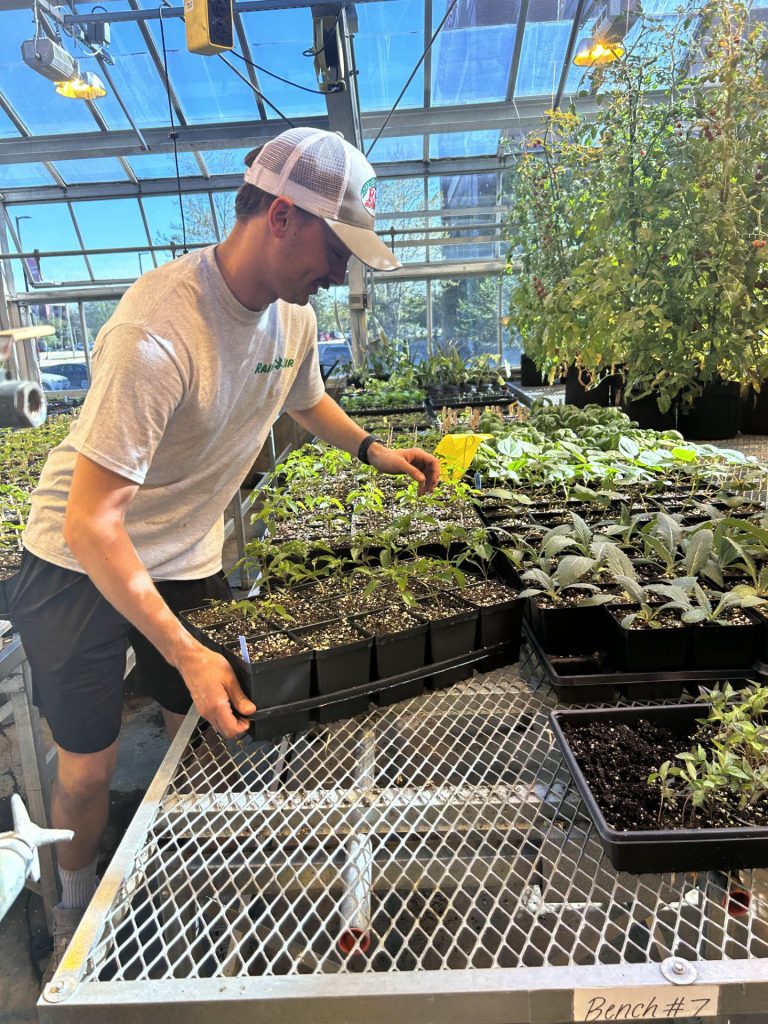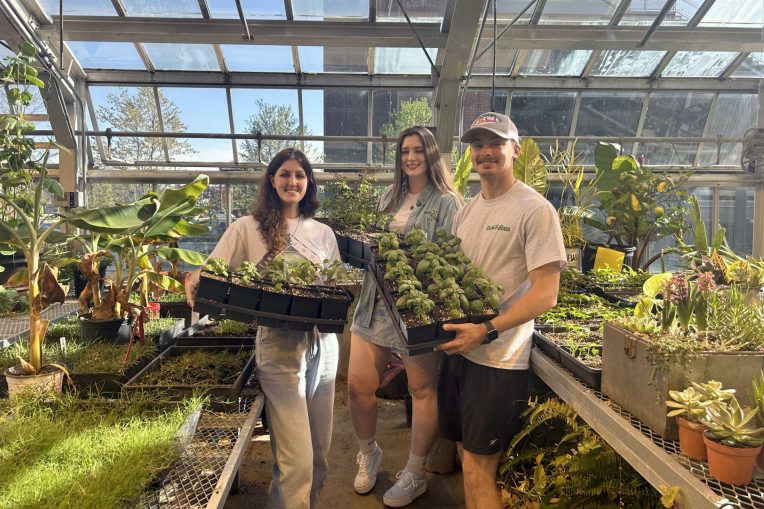April is Earth Month, and Illinois State University’s campus is blossoming with opportunities to celebrate nature.
The seeds for one such initiative were planted by senior environmental systems science and sustainability (ESSS) major Haley Cepek.
Cepek contacted Jessica Chambers ’93, director of the ISU Horticulture Center, because she wanted experience propagating plants. The two brainstormed ideas and decided on organizing a plant giveaway and accompanying survey through an internship.
The plants Cepek grew will be available for free on Saturday, April 27, from 11 a.m.-3 p.m. at the Horticulture Center (on Raab Road, north of the University Golf Course, and across the street from Heartland Community College).

“This internship helped me get the basic foundation of how to grow a plant, which is what I originally wanted to accomplish,” Cepek said. “It’s something so simple, but I haven’t had any prior experience, and I wanted to learn.”
Cepek teamed up with senior graphic design major Jessy Morrell and senior horticulture and agribusiness double major Ian Asklund. Morrell created promotional materials for the event and informational handouts about how people can grow their own plants.
Asklund works at the Ropp Agriculture Building greenhouse and is the current president of Illinois State’s Horticulture Club. He taught Cepek how to plant the seeds and manage the seedlings.
“Our goal is teaching people how to grow plants and how to grow their own food,” Asklund said. “I think it’s vitally important that students and people in general know where their food comes from and they know how to grow it.”
The team chose to grow five types of plants: a flowering plant, a native plant, a vegetable, an herb, and a house plant.
“I wanted to create variety so everyone can choose something they like,” Cepek said. “I also wanted plant diversity and to grow my plant identification skills.”
This event’s coordination involved collective efforts from all three students, each with diverse majors and affiliations across campus departments and colleges.
“When I first started coming up with ideas for this event, I thought it would just be me working on it,” Cepek said. “It’s been really helpful having this kind of interdisciplinary aspect to it.”
What started as a senior project turned into a team effort that grew beyond a single field of study, and the students all experienced the power of collaborating across majors.
“As faculty and staff, the University promotes interdisciplinary collaboration,” Chambers said. “We’re all here for this noble pursuit of education, and to see the students do it, it’s the best.”
As people arrive for their complimentary plants, Cepek will ask them to fill out a survey so she can collect data on the plants that attracted the most interest and were selected the most. This survey will also include information about each of the plants.
Cepek hopes the survey will start a conversation about including more opportunities to learn about plants within the natural sciences.
She also expects that survey results will inform which types of plants students want for future Horticulture Center plant sales, while encouraging participants to reflect on the significance of Earth Month.

